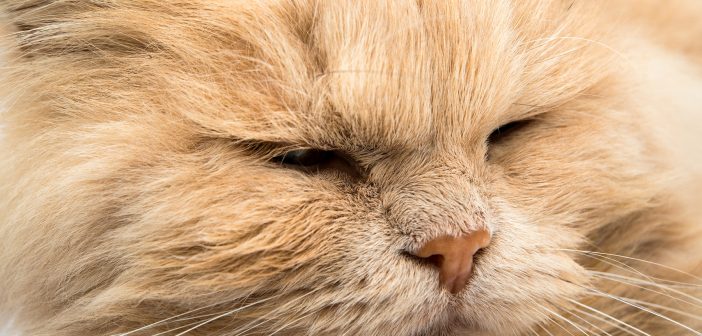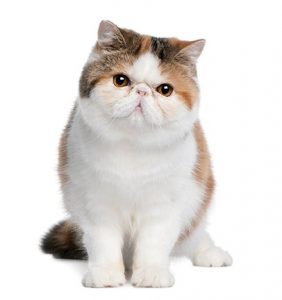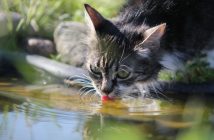by Rachel Watson, DVM
The term brachycephalic means “short head.” Many people are familiar with dog breeds, such as Pugs and Bulldogs, that fit this classification, but several breeds of cats are also considered brachycephalic. These include Persians, Himalayans, Burmese, Exotic and British Shorthairs. The skull bones of these cats are short, giving the face and nose a pushed-in appearance.
While this squished face may be cute, the variation from a longer nose can be problematic for the cat. As the nose is shortened, the amount of space available for other structures is restricted. The shorter the nose, the more likely the cat is to experience problems from their anatomy. Owners of these breeds should be aware of the potential health concerns of these cats.
Brachycephalic Airway Syndrome is a significant concern for short nosed cats. This syndrome refers to a set of upper airway abnormalities:
1. Stenotic nares – small, narrow nostrils;
2. Elongated soft palate – the soft part of the roof of the mouth is too long for the space available, which blocks the back of the throat;
3. Hypoplastic trachea – narrow windpipe diameter;
4. Everted laryngeal saccules – these are pouches of tissue near the voicebox that can be sucked into the airway as the cat breathes.
The net effect of these changes is increased airway resistance, which increases the work of breathing. Affected cats can have one or more of these changes, but the more changes present, the more severe the symptoms, which can include breathing through the mouth, noisy breathing or snoring, tiring easily with exercise, or, in severe cases, fainting. Cats may also cough, gag, or vomit. Over time, the increased work of breathing can put increased strain on the heart.
A veterinarian can diagnose this syndrome via a physical exam, although anesthesia is required to view the soft palate and larynx. Surgery is recommended to correct stenotic nares, elongated soft palate, and everted laryngeal saccules if they are present and interfering with breathing. The earlier the changes are corrected, the better the outcome. Obesity worsens the symptoms, so maintaining a healthy body weight for these cats is especially important.
The eyes of brachycephalic cats are also subject to changes. Increased or persistent tearing occurs because the tear ducts draining tears from the eyes through the nose are deformed by the shorter nose. These cats will need regular cleaning of the area around the eyes and may have staining of the hair on their face from the tears. Severely affected cats will have large, protruding eyes and may be unable to blink fully. This increased exposure of the eye leads to inflammation.
Excess skin on the shortened nose creates structures called nasal folds. These folds are prone to secondary infection and should be regularly cleaned. They also have the potential to irritate the eyes.
A short nose also results in a short jaw, which causes crowding of the teeth due to lack of space. Dental crowding means more places for plaque and tartar to accumulate leading to periodontal disease. Brachycephalic cats will require regular professional dental care with a veterinarian.
As with any pet, it is important to take your brachycephalic cat to the vet for annual examinations. Your veterinarian will be able to evaluate your cat for these concerns and tailor management of your cat’s individual needs.
Rachel Walton received her Doctor of Veterinary Medicine degree from Colorado State University in 2007. She is currently an associate veterinarian at University Veterinary Hospital and Diagnostic Center. Dr. Walton has 2 human children, 2 dogs, 2 cats, and 1 amazing husband.





